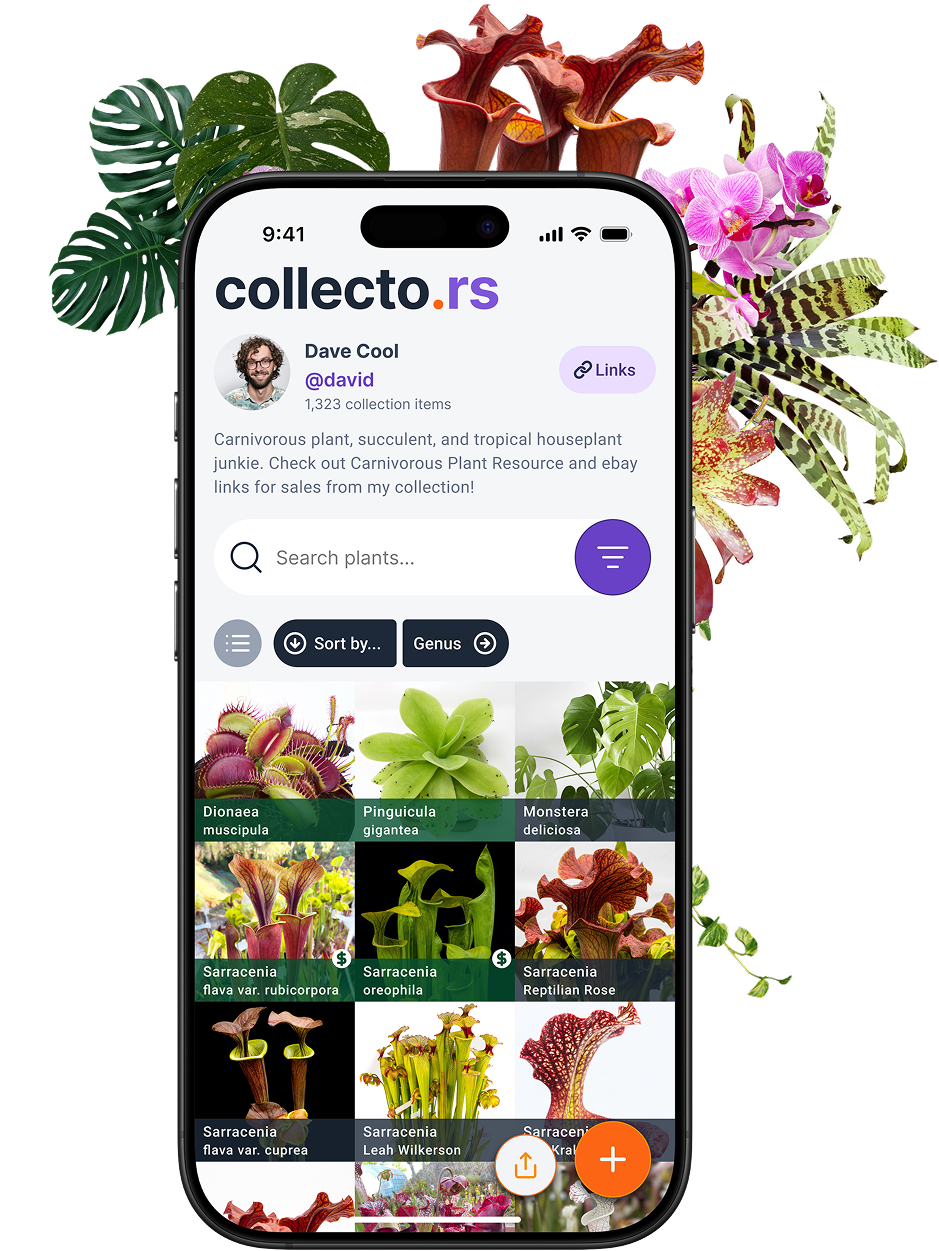Before You Buy A Rare Plant
A “rare” plant isn’t always rare—sometimes it’s just marketed well. Real collectors verify, document, and grow their collections sustainably.
🕵️♀️ How to Verify Your Rare Plant Purchases (Before You Get Catfished by a Cutting)
So you’ve found a “super rare variegated monstera” for $350 on Facebook Marketplace. Congrats—you’re either about to score a treasure or flush months of your Starbucks addiction down the toilet.
Here’s how to make sure you’re getting the real deal.
1. Start With Trusted Marketplaces
The internet is a jungle (and not the good kind). Stick to verified communities and marketplaces that enforce seller accountability.
| Platform | What Makes It Safe(ish) | Pro Tips |
|---|---|---|
| 🪴 Etsy | Seller reviews, photos, and refund policies. | Sort by “Top Star Seller” and look for real plant photos (not Pinterest clones). |
| 🌱 Facebook Plant Buy/Sell/Trade Groups | Tight-knit collector communities with moderators. | Search group history for seller names before sending money. |
| 🧬 AroidMarket | Specializes in rare and tissue-cultured plants. | Check origin and shipping conditions before buying overseas. |
| 🌿 Equatorial Plants | Trusted nursery with verified species documentation. | They list source nurseries—always a good sign. |
| 🪴 Ecuagenera | One of the OGs for rare imports (especially aroids & orchids). | Ask for phytosanitary certificates for imported plants. |
| 🧾 Reddit r/rareplants | Peer-reviewed community of collectors. | Use mod-approved seller lists and check post histories. |
2. Learn the Signs of a Fake Listing
Just like dating apps, if it looks too good to be true, it probably is. You can trust me, just because she wrote "I'm a plant Mom" on her profile doesn't mean she wants a 1200 sqft greenhouse in the backyard. 😦
Red flags to look for:
- 💸 Priced too low compared to market averages
- 📸 Stock or watermarked photos lifted from Instagram
- 🕵️♂️ Seller dodges questions or refuses close-up pics
- 🚫 No root photos for “rooted” cuttings
- 💬 New seller profiles with no reputation or history
Bonus tip:
Use Google Image Search or TinEye to reverse search the listing photo. If you see the same pic on multiple sites—run.
3. Ask for Verification Proof
Legit sellers will have something to show for it. If they don’t, walk away.
Ask for:
- Timestamped photos (handwritten date next to the plant)
- Root close-ups (no roots = red flag 🚩)
- Mother plant photos (to confirm they actually own it)
- Source details (nursery name, import date, etc.)
If they give excuses like “camera broken,” congratulations—you just dodged a scam.

4. Use Tools to Track Market Prices
You can avoid overpaying by knowing the current going rate for a plant.
Try:
- 📊 RarePlantPrices.com — community-driven price index
- 📷 Instagram hashtags — check what collectors are trading for
- 🌐 eBay Completed Listings — search “sold” results for recent sales data
Compare across sites before buying. That $400 Anthurium might be $120 elsewhere.
5. Buy From Collectors, Not “Plant Flippers”
Plant flipping is real—and often shady. Reputable collectors care about plant health, not just markup.
How to spot a true collector:
- They can tell you the origin of the plant, not just the price
- They have photos of the plant over time (not just day one)
- They talk about growing conditions, not just “DM me for details”
Bonus: If they’re using collecto.rs, they can even share their collection profile with you and link you straight to the buy page from their collecto.rs profile. That’s a trust signal you can actually measure. 🌱

6. Use Payment Methods With Protection
Never pay via Venmo “friends & family” or direct bank transfer. Ever.
Instead, use:
- 💳 PayPal Goods & Services — includes buyer protection
- 🛒 Etsy Checkout — built-in refund guarantees
- 🏦 Credit cards — dispute options if things go wrong
Scammers hate paper trails. You should love them.
7. Keep a Verification Log
If you’re dropping hundreds (or thousands) on rare plants, document every transaction—especially from overseas sellers.
You can track:
- Seller name & contact info
- Date purchased
- Payment method
- Phytosanitary certificates or import papers
- Photos before and after shipping
Use a collecto.rs plant profile to store these details. Receipts are sexy, just like the plants in my greenhouse that kept me company when "Plant Mom" left me.
🌿 Final Word: Don’t Let Hype Cloud Your Roots
A “rare” plant isn’t always rare—sometimes it’s just marketed well. Real collectors verify, document, and grow their collections sustainably.
Or as we like to say:
“Collect plants like a nerd, not like a gambler.”
Ok, that's the first time we've ever said that. Can we make it a thing?

